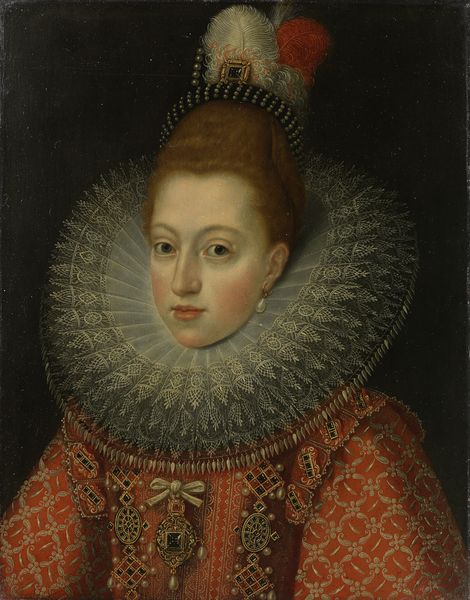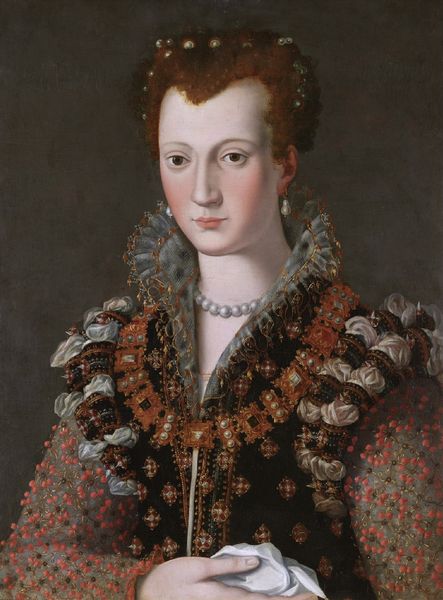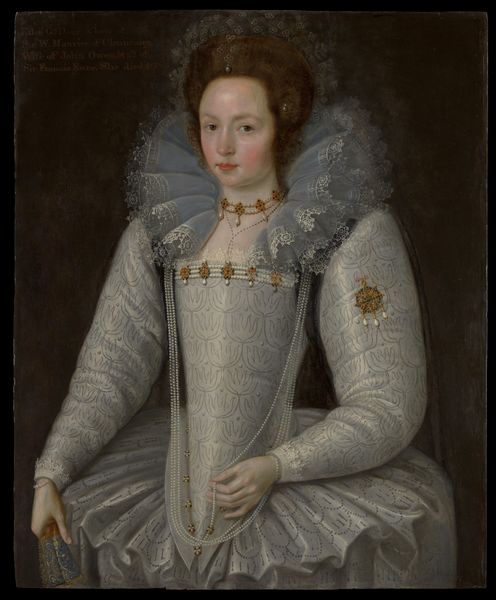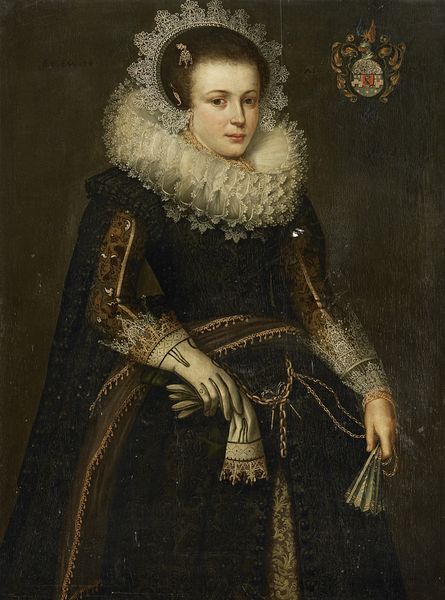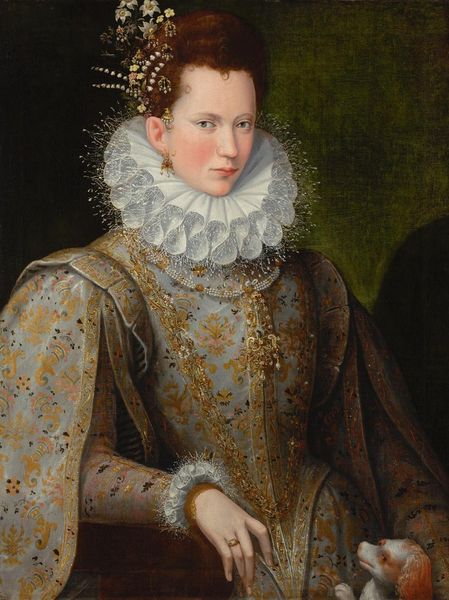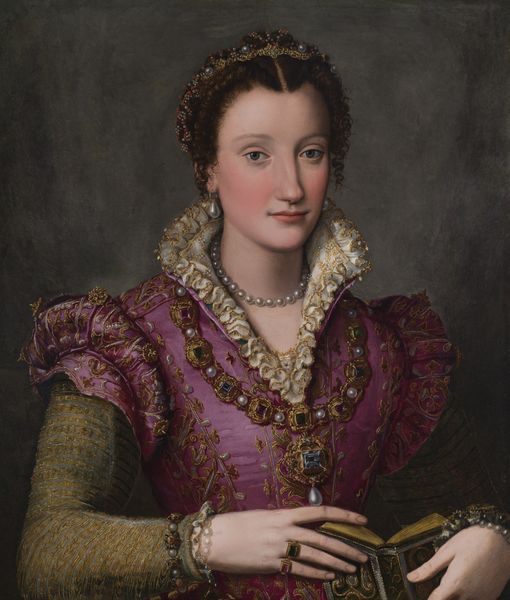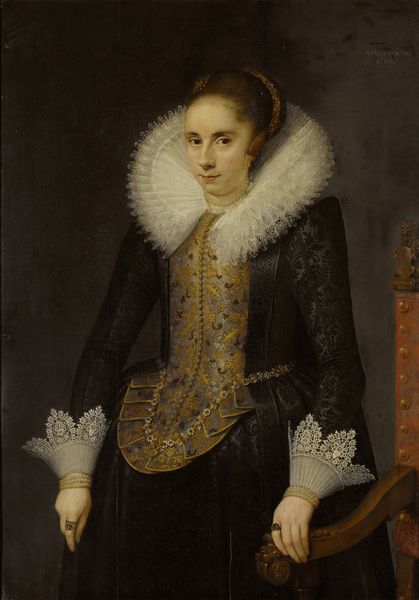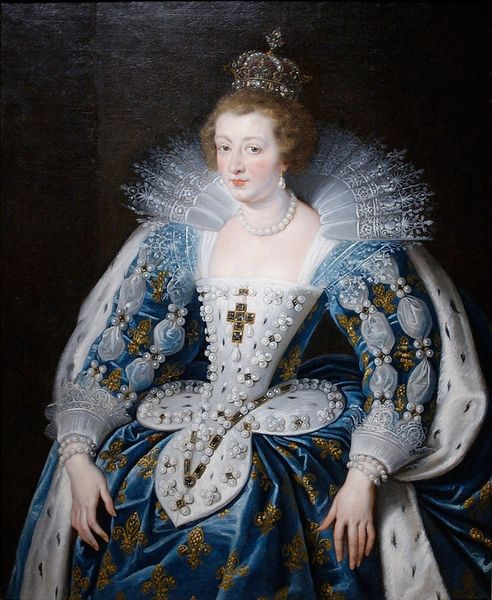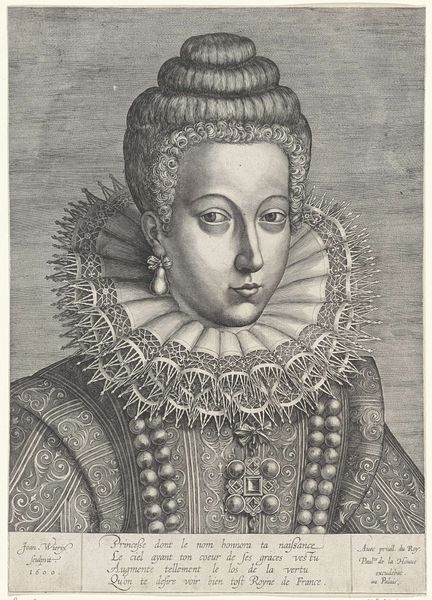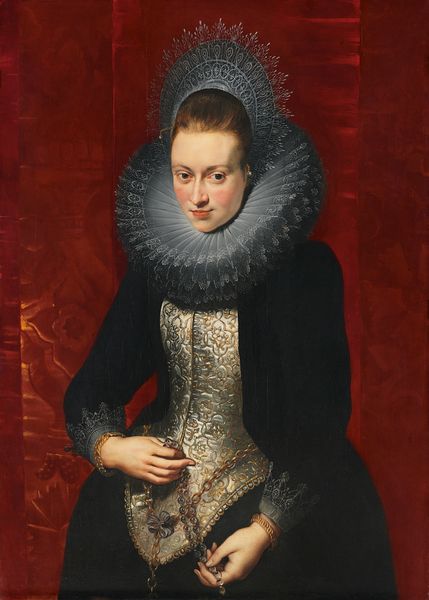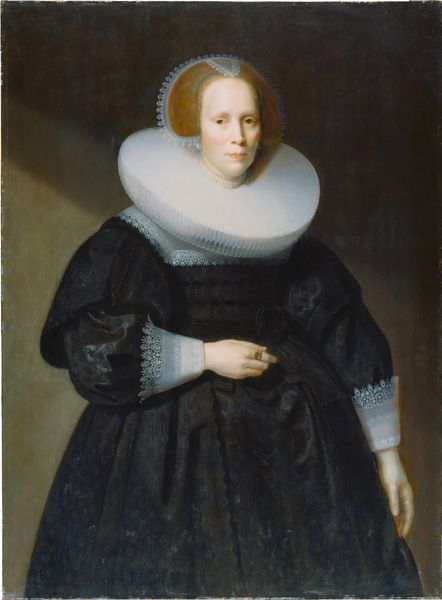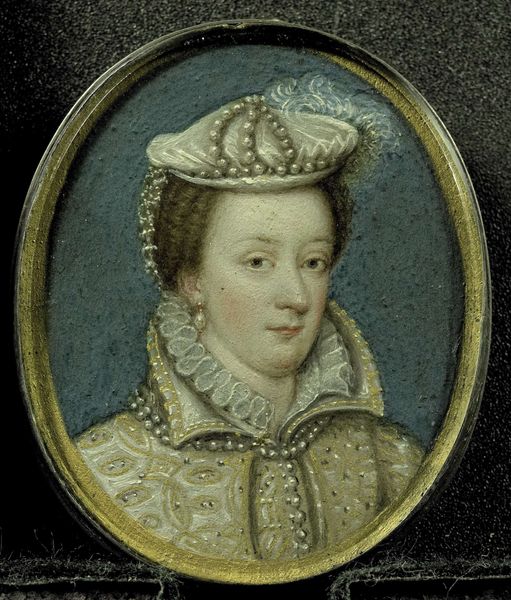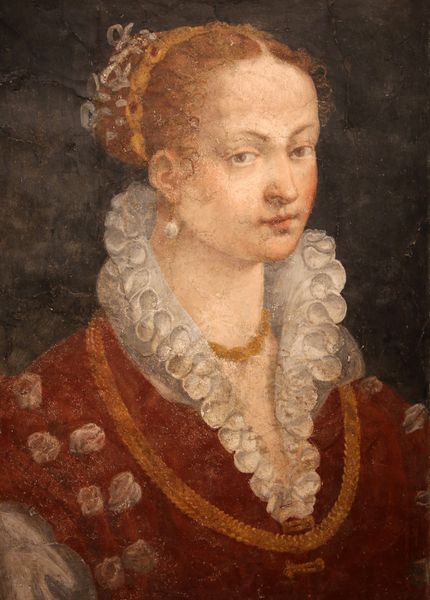
Portrait of Archduchess Isabella Clara Eugenia (1566-1633), Infanta of Spain c. 1600
0:00
0:00
fransiipourbus
Rijksmuseum
painting, oil-paint
#
portrait
#
character portrait
#
baroque
#
painting
#
oil-paint
#
mannerism
#
portrait reference
#
portrait head and shoulder
#
animal drawing portrait
#
portrait drawing
#
history-painting
#
facial portrait
#
portrait art
#
fine art portrait
#
celebrity portrait
#
digital portrait
Dimensions: support height 28.5 cm, support width 22.4 cm, outer size height 45.5 cm, outer size width 39.2 cm, outer size depth 4 cm
Copyright: Rijks Museum: Open Domain
Curator: Here we have a striking portrait by Frans Pourbus the Younger, created around 1600. It depicts Archduchess Isabella Clara Eugenia, Infanta of Spain. The artwork resides here at the Rijksmuseum. Editor: My first thought? Starch. So much starched fabric around her face! It’s like she's peeking out from behind a pristine doily. Curator: That arresting ruff is indeed a key structural element. Notice how its circular form contrasts with the verticality of her figure and the darker backdrop. The geometric precision focuses attention on the face. Editor: I see what you mean about the geometry, but for me, it’s all about that determined look. She's got a quiet power, almost like she's thinking, "Yes, I AM important, deal with it." And that elaborate headpiece only adds to the effect. Curator: Consider the historical context. As the daughter of Philip II of Spain, Isabella held considerable political sway. The Mannerist and early Baroque elements combine to construct a regal image, intended to convey power and authority. Editor: Absolutely, and the costume—wow! Each pearl, each stitch, seems calculated to project dynastic strength. But I wonder, did she ever just want to ditch the pearls, let her hair down, and grab a pizza? Curator: (chuckles) A thought experiment for another time, perhaps. Though, what this portrait presents is an exercise in controlled optics and dynastic ambition—the composition reinforces established hierarchies. The oil-paint’s application gives it that typical 17th-century glow! Editor: It makes you think about what a "portrait" really means—it’s not just a face, but an ideal, a message carefully curated. But maybe that’s the joy of looking: taking your own meaning from these past encounters. Curator: Precisely. In her gaze we are left contemplating how art distills authority and presence across the centuries. Editor: Right. Though for me, it all started with that doily! A brilliant point of entry!
Comments
No comments
Be the first to comment and join the conversation on the ultimate creative platform.
